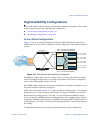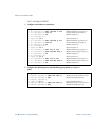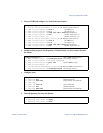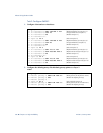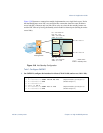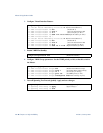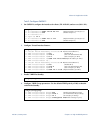
Alteon OS Application Guide
238
Chapter 13: High Availability 42C4911, January 2007
Hot-Standby Configuration
The primary application for VRRP-based hot-standby is to support Network Adapter Teaming
on your server blades. With Network Adapter Teaming, the NICs on each server share the
same IP address, and are configured into a team. One NIC is the primary link, and the others
are backup links. For more details, refer to the NetXen 10 Gb Ethernet Adapter documentation.
A hot-standby configuration allows all processes to failover to a standby switch if any type of
failure should occur. All Virtual Interface Routers (VIRs) are bundled into one Virtual Router
group, and then they failover together. When there is a failure that causes the VRRP Master to
failover to the Standby, then the original primary switch temporarily disables the internal
server links, which, in turn, causes the NIC teams to failover as well.
NOTE – When using hot-standby redundancy, peer switches should have an equal number of
connected ports.
If hot-standby is implemented in a looped environment, the hot-standby feature automatically
disables the hot-standby ports on the VRRP Standby. If the Master switch should failover to
the Standby switch, it would change the hot-standby ports from disabled to forwarding, with-
out relying on Spanning Tree or manual intervention. Therefore, Spanning Tree must be dis-
abled.






